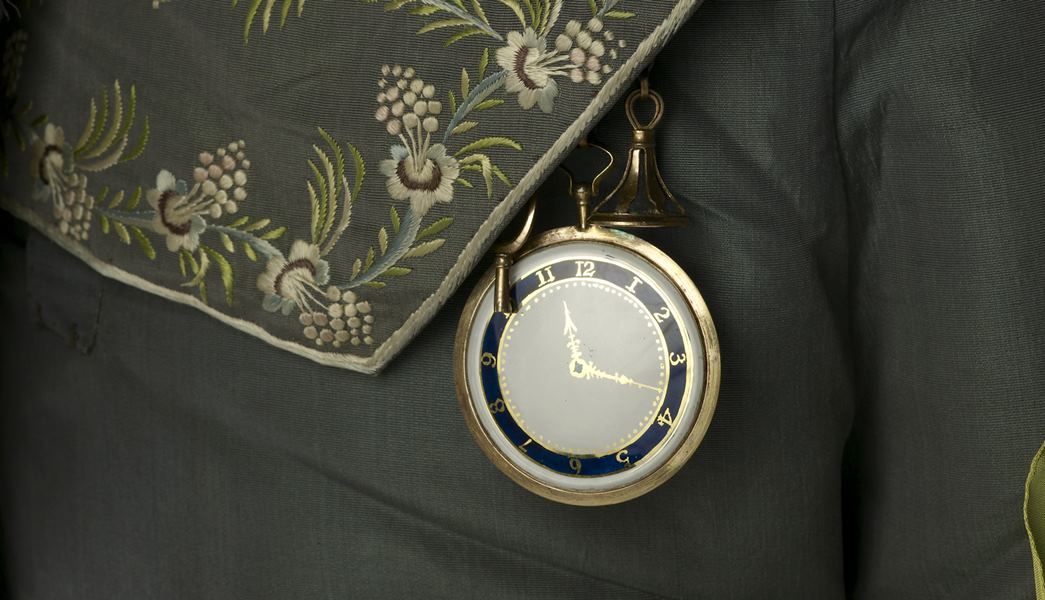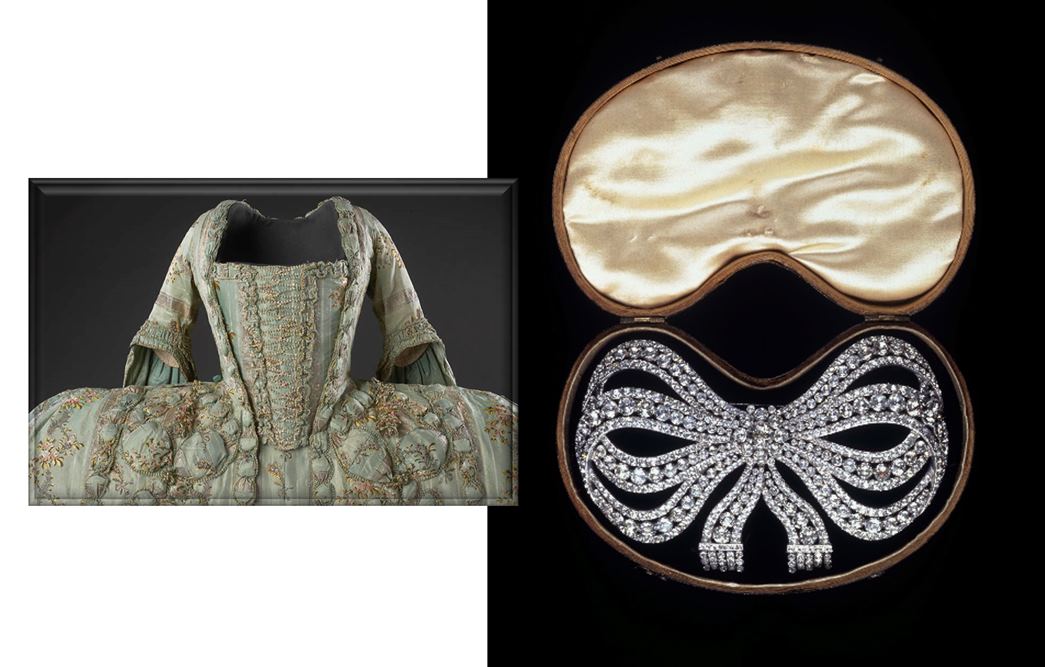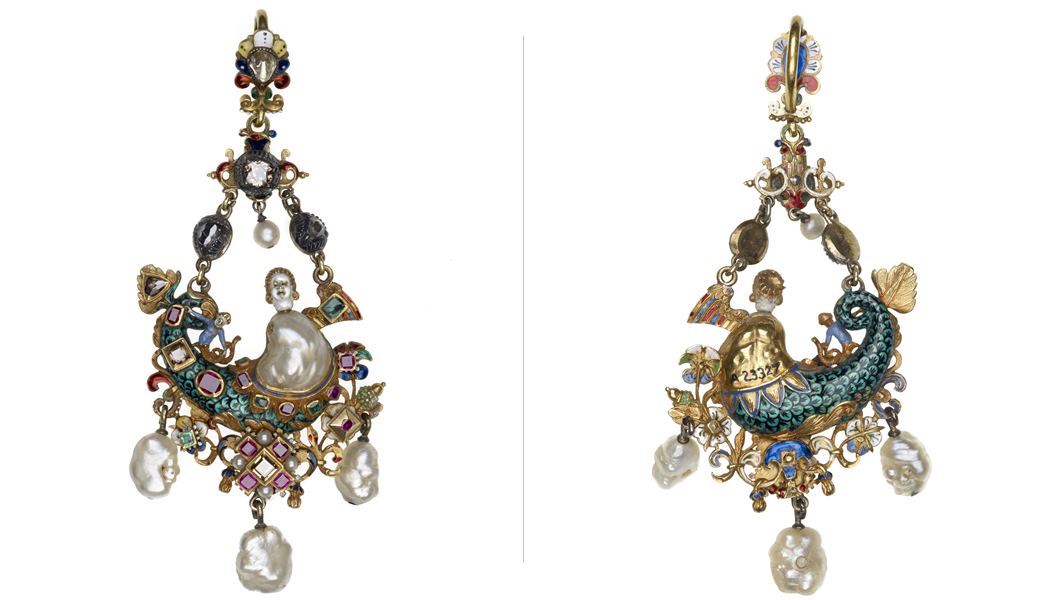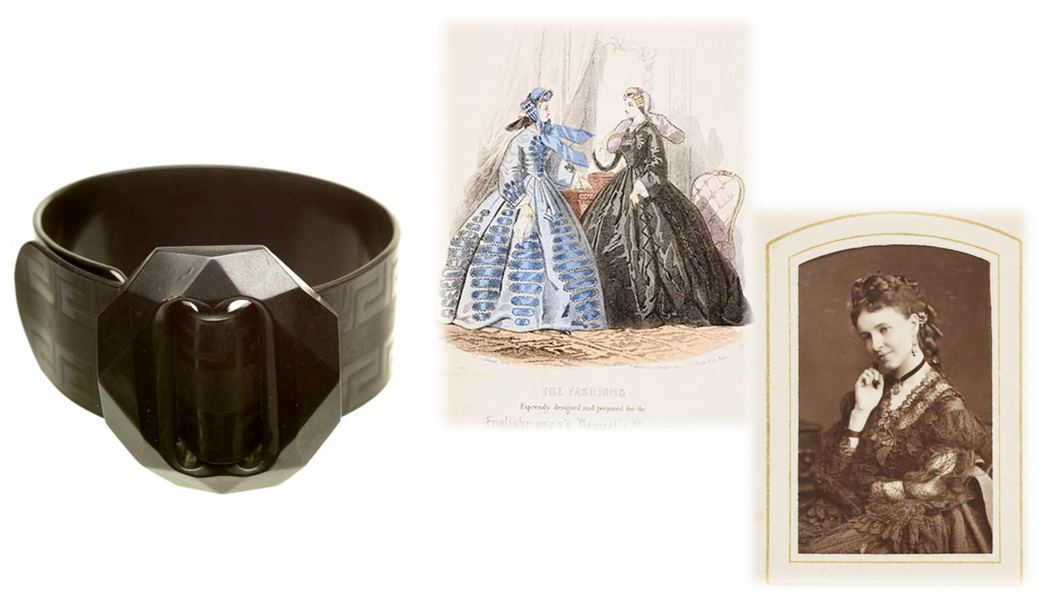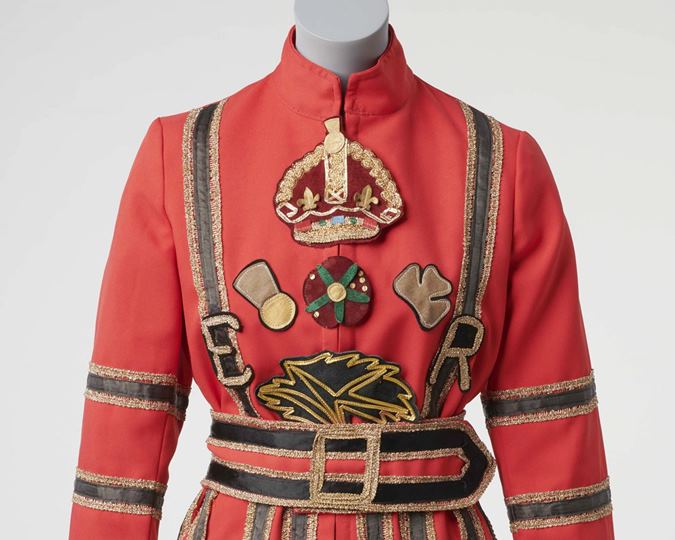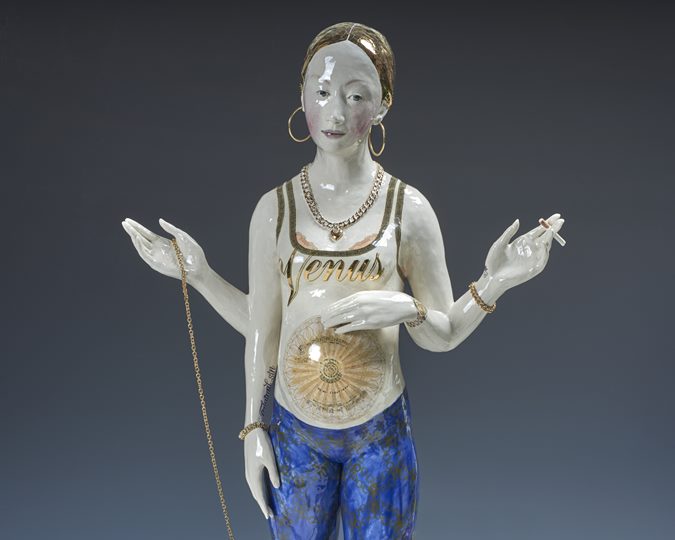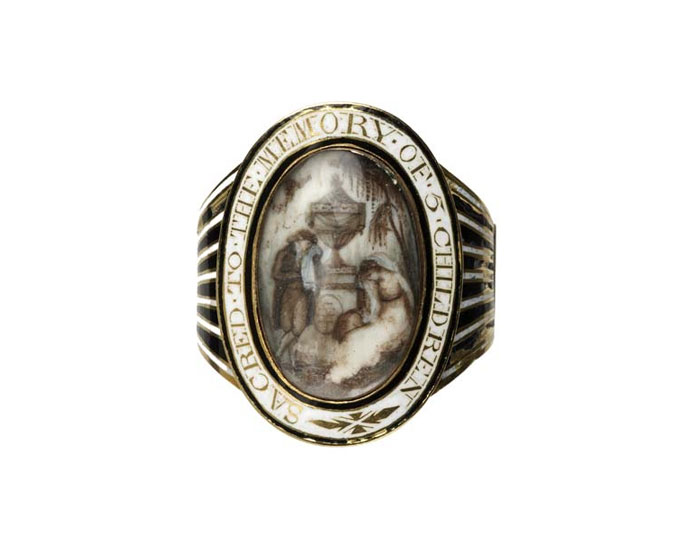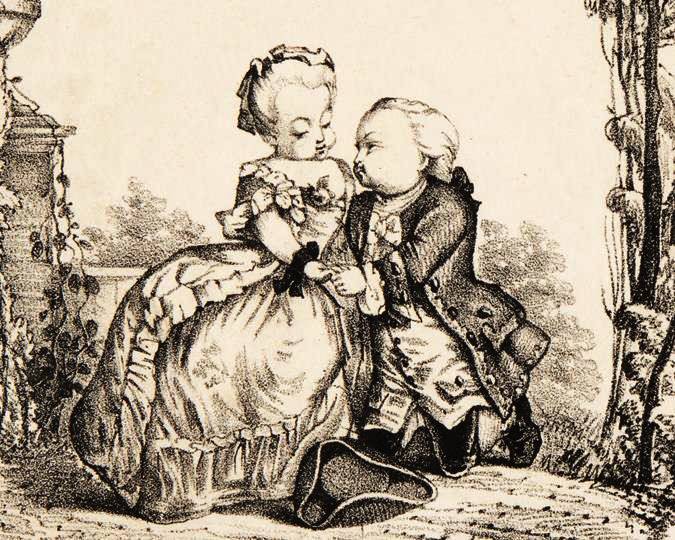Fakes and clever imitations have played an important role in London’s fashion history. Often unable to afford the real deal, Londoners on a budget sought out clever imitations to stay à la mode! We look at some brilliant fakes from our collection.
London has always had a reputation as a flashy city, where sharp dressing goes hand-in-hand with sharp practice. With the wealth of the aristocracy and the merchant classes on public display, Londoners of less elevated status have long sought to dress like their so-called ‘betters’ on a limited budget. It’s not surprising, then, to find that many pieces in the Museum of London’s jewellery collection are not quite what they appear to be. Fakes, frauds and clever imitations – are you fooled?
Time trouble
False watch, gilt and enamel, c.1770s
When is a watch not a watch? When it’s a fake! This late 18th-century false watch has an enamelled face — the painted-on hands stuck permanently at 17 minutes past 11. Glimpsed from across a busy room, perhaps by candlelight, it might just pass for the real thing; attached to the wearer’s waistband by a fashionable silk ribbon or a chain.
London’s watchmakers were renowned for their complex and exquisite timepieces, and even a simple silver watch would cost between £2 and £5 — almost the entire annual salary of a London maidservant in the 18th century. Not only did this put them beyond the financial reach of many, it also made them an attractive target for pickpockets — small, high-value, and worn on the outside of clothing. Watches turn up regularly in court transcripts of the period, often stolen from intoxicated men by female sex workers to augment their night’s income.
Whoever owned this watch may have simply been unable to afford the real thing, but determined to appear fashionable in public. Given the proliferation of theft on London’s streets, however, it might well have been used as a decoy watch, with the real timepiece concealed elsewhere for safety.
All that glitters…
Paste stomacher ornament, silver and glass, c.1780
Set against the bright patterned silks and brocades of 18th-century fashion, diamond jewellery was the ultimate symbol of wealth and status. Diamonds were a rarer commodity than they are today, mined primarily in India, and could be worn all over the body, even in the hair and sewn onto garments. Ornaments like this one would have been attached to the stomacher, a decorative V-shaped panel of fabric worn at the front of a woman’s bodice. It appears to sparkle with dozens of large diamonds, set into the shape of a ribbon bow, and would probably have been worn alongside equally ostentatious diamond drop earrings, perhaps a pair of bracelets, and rings.
Such opulence was not necessarily as expensive as it appeared. This ornament is actually set with pastes — faceted glass ‘jewels’ that were cut and polished to resemble gemstones. Lead glass was used for its high refractive quality, meaning that it caught the light well, and the glass stones would be set against a metal foil backing to enhance their sparkle. Pastes could also be set against coloured foils, giving the impression of a ruby, amethyst, or other coloured jewel.
Far from being seen an embarrassing secret, paste jewellery was recognised as an art form in its own right, since the process of shaping and polishing the glass was a highly skilled and labour-intensive one — brilliance on a budget!
A royal fake!
Mermaid pendant, enamel and pearls, c.1840
This pendant was probably was part of a jewellery set given to Queen Victoria by her husband, Prince Albert, in 1842. Fashioned from pearls, enamel, and paste ‘jewels’, the pendant is in the form of a mermaid, her body formed from two irregular pearls and her tail rendered in green enamel.
If you didn’t know its history, you’d be forgiven for thinking that this was a much older piece of jewellery. It’s designed in a Renaissance revival style, meaning that it mimics the type of jewellery being produced in Europe in the 1500s, where the mermaid was a symbol of seduction and temptation. This revival originated in 19th-century Germany, but was also popular in France and Britain.
The 19th century was remarkable for ‘revivals’, where jewellery and other decorative arts were consciously produced in much older styles. There was a Rococo revival beginning in the 1830s, mimicking the elaborate scrolling designs of a century previously. Between the 1860s and 1880s, there was an ‘archaeological’ revival, which popularised jewellery in the style of ancient Etruscan, Roman and Greek pieces; prompted by contemporary archaeological excavations in the Mediterranean. While some revival objects were deliberate fakes, and passed off as being true antiquities, most were simply homages to the styles of centuries gone by.
A sad affair
Pair of mourning bracelets, ebonite, c.1860
Mourning fashion was big business in Victorian London. Strict etiquette dictated that the surviving relatives of a deceased person dress exclusively in black for a certain amount of time, depending on their relationship. Widows, for example, stayed in ‘deep’ (all-black) mourning for at least a year after the death of their husband; moving eventually to ‘half-mourning’ in muted greys and purples.
Though mourning was meant to signal grief and social seclusion, many women took the opportunity to indulge in the latest fashions, including jewellery and accessories. Jet was considered the height of suitability for mourning jewellery — a type of lignite coal made from compressed wood, it is easy to carve and produces a soft sheen when polished. However, it was expensive, priced similarly to gold jewellery, and some consumers looked for cheaper alternatives, including black glass.
These Greek-style bracelets, which would have been worn as a matching pair, are a great example of imitation jet — not glass, but rubber! Known as ebonite, or vulcanite, the material was derived from natural rubber, hardened with the addition of sulphur. This process, known as vulcanisation, was at the cutting edge of 19th-century technology; first patented in the 1840s and used in industry as well as jewellery.
The Museum of London has many examples of fake and imitation jewellery in its collection, many of which were used for theatrical and fancy-dress costumes. Here, we’ve given just a small glimpse of how fakes were very much a part of a stylish Londoner’s wardrobe! To see more examples of similarly spectacular fakes and frauds, visit our Online Collection here.
Header image: Crown made from gilt metal and set with multicoloured paste stones. There is a padded textile band around the inside. (ID no.: A23255/14)








